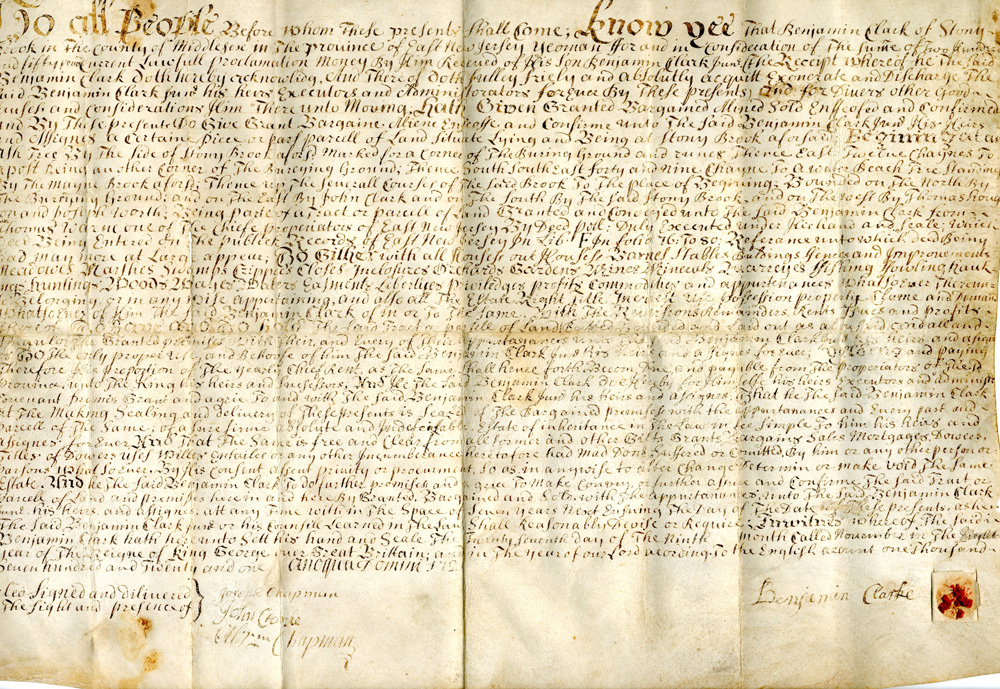
Deed conveying land “at Stony Brook” from Benjamin Clarke (1670-1747) to his son Benjamin Clarke (1698-1742), 1721
Collection of the Historical Society of Princeton
Part of Early Stony Brook and The Emergence of Princeton Extravagance.
This house dates from the late 17th century and was the residence of Benjamin Clarke, a prominent Quaker, writer, surveyor, and businessman who made one of the first major land purchases in Stony Brook. In 1696, he acquired 1,200 acres from the Proprietors of East Jersey. Some of this he sold, some he donated for the Stony Brook Meeting House, and some he farmed with his wife Anne, and their ten children. This house remained in the Clarke family for many generations following.
Though Clarke himself notably chose not to hold enslaved people (instead, he used indentured servants for labor), it was common for Princeton farmers -- even those of the Quaker faith -- to use slave labor for field and domestic chores. Wealthier families often kept as many as seven or eight enslaved people on their property. Families of middling status tended to hold one or two. In 1758, leading Quaker organizations in Philadelphia officially determined that slavery contradicted their most essential principles. Only then did Princeton Quakers begin to grant freedom to the people they possessed. Those who were not willing to give up the practice were quick converts to Presbyterianism, an increasingly strong religious influence in Princeton.
Later Name: Eno House, after Amos Eno who owned house and surrounding farm in the twentieth century.
Original Sections: One-and-a-half story eastern section has the oldest hewn floor joists. The central section was also built in the 18th century, after the eastern wing.
Present Use: private residence

Deed conveying land “at Stony Brook” from Benjamin Clarke (1670-1747) to his son Benjamin Clarke (1698-1742), 1721
Collection of the Historical Society of Princeton